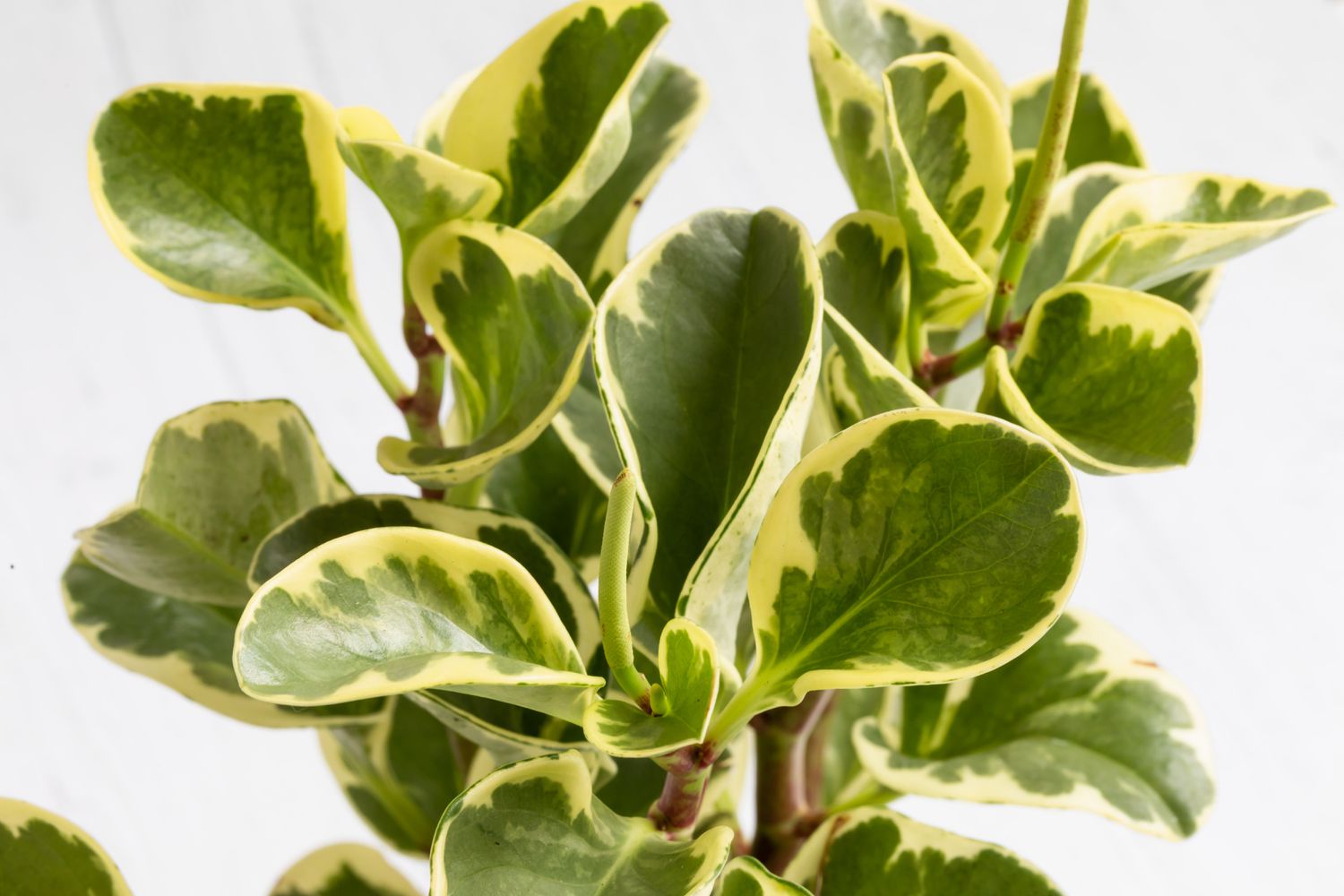
Peperomia, commonly known as radiator plants, is a diverse and fascinating group of plants that have gained popularity among plant enthusiasts and collectors. With their unique foliage and easy care requirements, peperomias have become a favorite choice for both indoor and outdoor gardens.
In this article, we will uncover 18 unbelievable facts about peperomia that will surely pique your interest and deepen your appreciation for these stunning plants. From their origins in the tropical rainforests to their wide range of leaf shapes and patterns, peperomias will surprise you with their diversity and resilience.
So, whether you are a seasoned plant parent or new to the world of gardening, prepare to be amazed by the incredible world of peperomia plants!
Key Takeaways:
- 1. Peperomia plants come in over 1,500 species, offering a wide range of colors and textures to choose from. They are easy to care for and make a great addition to any plant collection!
- 2. Peperomia plants are like little air purifiers, removing toxins from the air and bringing good luck and positive energy to your home. They are perfect for beginners and experienced plant lovers alike!
Peperomia is native to tropical and subtropical regions of the world.
These plants thrive in warm and humid environments, which is why they are commonly found in countries such as Brazil, Colombia, and Ecuador.
There are over 1,500 known species of Peperomia.
With such a vast variety, there is a Peperomia plant for every plant enthusiast, with different leaf shapes, colors, and patterns to choose from!
Peperomia plants are often chosen for their ornamental foliage.
From heart-shaped leaves to variegated patterns and textures, Peperomia plants offer an array of stunning visuals that can enhance any indoor or outdoor space.
These plants are typically low-maintenance.
Peperomia plants thrive in bright, indirect light and prefer well-draining soil. They are known for their ability to adapt to different light conditions, making them perfect for beginners and busy plant lovers.
Peperomia species have adapted to grow in various habitats.
Some species are succulent in nature, storing water in their fleshy leaves, while others have thick, leathery leaves that help them withstand drier conditions.
Peperomia plants are often referred to as “Radiator Plants.”
This nickname comes from their ability to withstand fluctuations in temperature, replicating the way a car radiator functions.
Peperomia plants are non-toxic to pets.
If you are a pet owner, you can enjoy the beauty of Peperomia plants without worrying about your furry friends getting sick if they decide to take a nibble.
Peperomia plants can be propagated easily.
From stem cuttings to leaf cuttings, Peperomia plants are known for their ability to root quickly and produce new growth, making them an excellent choice for plant propagation enthusiasts.
Certain Peperomia species have medicinal properties.
Some species, such as Peperomia pellucida, are used in traditional medicine for their potential anti-inflammatory and analgesic properties.
Peperomia plants can enhance indoor air quality.
These plants have the ability to remove toxins from the air, improving the overall air quality in your home or office.
The name “Peperomia” comes from the Greek word “peperi,” meaning “pepper.”
This name is derived from the resemblance of some Peperomia species’ flower spikes to pepper.
Peperomia plants belong to the same family as black pepper plants.
The Piperaceae family includes both the beloved Peperomia plants and the plants that produce the popular spice we use in our kitchens.
Peperomia leaves come in a wide range of colors.
From vibrant greens to shades of red, purple, and silver, Peperomia plants offer a beautiful palette of colors to choose from.
Some Peperomia species have interesting leaf textures.
From puckered leaves to shiny, wax-like surfaces, the diverse leaf textures of Peperomia plants add to their unique charm.
Peperomia plants can be grown in terrariums.
Due to their compact size and ability to thrive in humidity, Peperomia plants make excellent additions to terrariums and miniature garden setups.
Peperomia plants are considered symbols of good luck and prosperity.
In some cultures, giving a Peperomia plant as a gift is believed to bring good fortune and positive energy to the recipient.
Some Peperomia species produce small, insignificant flowers.
While the foliage is the main attraction of Peperomia plants, it is worth noting that some species do produce tiny flowers that add a touch of beauty to the overall plant.
Peperomia plants are excellent candidates for plant collections.
With their wide variety of forms and colors, Peperomia plants are highly sought after by plant collectors looking to expand their indoor jungle.
As you can see, Peperomia plants are truly remarkable and offer a delightful addition to any plant lover’s collection. Their unique characteristics, low-maintenance requirements, and stunning foliage make them a popular choice among plant enthusiasts. Whether you are a beginner or an experienced gardener, Peperomia plants are sure to spark joy in your indoor or outdoor space. So go ahead and explore the fascinating world of Peperomia!
Conclusion
Peperomia plants are remarkable and fascinating in many ways. From their diverse range of species to their ability to thrive in various environments, these plants continue to captivate plant enthusiasts worldwide. Whether you’re a seasoned plant lover or just starting to discover the beauty of indoor gardening, adding a peperomia to your collection is a fantastic choice.
With their unique leaf patterns, low maintenance requirements, and air-purifying qualities, peperomia plants can bring life and vibrancy to any space. Their compact size also makes them perfect for small apartments or offices with limited space.
Whether you choose a Peperomia obtusifolia, Peperomia caperata, or any other variety, these plants are sure to leave a lasting impression. So go ahead, explore the world of peperomias, and let their charm enliven your indoor oasis.
FAQs
1. How often should I water my peperomia?
Peperomias prefer slightly dry conditions, so it’s important not to overwater them. Allow the top inch of soil to dry out between waterings, and make sure the pot has drainage holes to prevent waterlogging.
2. Can peperomias tolerate low light conditions?
Peperomias are known for their ability to thrive in low light conditions. They can tolerate partial shade and even fluorescent lighting, making them perfect for offices or rooms with limited natural light.
3. Do peperomia plants require fertilization?
Peperomias are not heavy feeders, but they can benefit from occasional fertilization during the growing season. Use a balanced, water-soluble fertilizer and follow the instructions on the packaging to avoid overfertilizing.
4. How do I propagate my peperomia?
Peperomias can be propagated through stem or leaf cuttings. Simply cut a healthy stem or leaf from the plant and place it in a well-draining potting mix. Keep the soil slightly moist and provide indirect light, and roots should start to develop within a few weeks.
5. Are peperomia plants safe for pets?
Peperomias are generally considered non-toxic to pets. However, it’s always best to monitor your pets and keep them away from any plants to prevent any potential ingestion or allergies.
Peperomia's fascinating facts have likely piqued your curiosity about this incredible plant genus. If you're eager to learn more, consider exploring the astonishing world of Watermelon Peperomia. This unique species boasts a host of surprising characteristics that will leave you marveling at nature's creativity. From its striking appearance to its easy-care nature, Watermelon Peperomia is a must-know for any plant enthusiast. So, why not continue your journey of discovery and uncover the secrets of this remarkable plant?
Was this page helpful?
Our commitment to delivering trustworthy and engaging content is at the heart of what we do. Each fact on our site is contributed by real users like you, bringing a wealth of diverse insights and information. To ensure the highest standards of accuracy and reliability, our dedicated editors meticulously review each submission. This process guarantees that the facts we share are not only fascinating but also credible. Trust in our commitment to quality and authenticity as you explore and learn with us.


